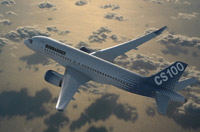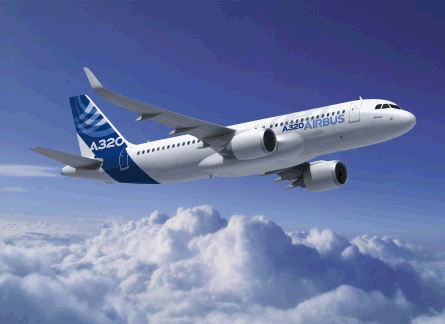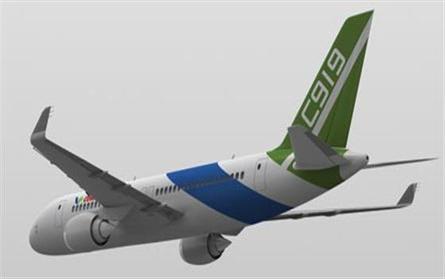Additional reporting by Fay Sanders
Many years ago when still at the helm of Embraer, Mauricio Botelho was asked about his appetite to go head to head with the industry's "big two" in the mainline jet sector. "Occasionally I come up against Airbus and Boeing today in campaigns with the E-Jet," he said. "And when I do, I start to miss my old foe Bombardier."
Botelho's point was simple: when "playing with the big boys", the ferocity of competition goes up by an order of magnitude to a point where the pressure can lead to burst blood vessels. And the events of the past 12 months have clearly illustrated that when Airbus and Boeing enter the fray, prisoners aren't taken alive.
Since the beginning of last year, Airbus has secured orders for almost 1,300 of its A320neo family. Offered with CFM International's Leap-1A or Pratt & Whitney's PW1100G advanced turbofans, the re-engined A320 will offer 15% lower fuel burn than today's models, says Airbus.
Boeing only entered the fray only in July, offering a similar performance gain with its Leap-1B-powered 737 Max, but has already signed up more than 1,000 orders and commitments.
Over the same period, the new entrants to the mainline sector - the Bombardier CSeries and the so-called "national projects" from China's Comac and Russia's Irkut - took just 188 firm sales between them. Regional new boys Sukhoi landed 67 orders and Mitsubishi failed to add any new customers.
IMPACT FOR NEW ENTRANTS |
|---|
"In 2011, all the emerging producer hype crumbled like a house of cards, while legacy players reasserted their dominance," says Teal Group head of analysis Richard Aboulafia. "The CSeries is being destroyed by legacy players, not by emerging producers. Irkut's MS-21, a Putin government priority, has joined the list of every other Putin government priority, such as representative democracy. Mitsubishi's MRJ looks stalled. The oft-mooted vision of Embraer as an emerging large jetliner producer was shelved by the E-Jet re-engining decision. There were some orders for Comac's C919 [mainline jet], but all were Chinese customers, following the pattern of the ARJ21 regional jet, which spent 2011 falling apart."
 |
|---|
©Bombardier |
For the CSeries, which is approaching first flight at the end of this year, 2011 was another slow sales year and Bryan Bedford, chief executive of launch customer Republic Airways Holdings, recently repeated his concerns about the lack of orderbook growth. "Bombardier doesn't share that concern," he said.
Philippe Poutissou, vice-president for marketing at the Canadian company's commercial aircraft division, explains why: "In 2011 we were very pleased to have added five firm customers - and a sixth (Privatair) in January 2012 - as well as two significant letters of intent which brought our orders and commitments up to 317 from 11 customers. That means that 2013, 2014 and 2015 are essentially sold out, as is most of 2016."
Poutissou acknowledges that his rivals had "a very good year" with their larger narrowbodies, but claims Bombardier's calculations show that in the 100 to 150-seat segment where the CSeries competes, the Canadian twinjet has won "close to 70%" of the net order market share over the last 24 months.
But the pressure Bombardier is feeling is no accident. Two years ago, as Airbus mulled whether to launch its re-engined A320 family, it stated its intention to destroy the CSeries business case and force other new entrants to rethink their plans.
"The important thing that goes into our equation when considering re-engining," said chief operating officer customers John Leahy in May 2010, "is that there is no reason for CSeries, the Comac C919 or the [Irkut] MS-21 if you re-engine the 737 or A320 because you'll have better economics than these new airplanes."
Leahy predicted that the prospect of an upgraded A320 or 737 would force the new entrants "to look at a redesign or perhaps even a delay".
There was little doubt that the CSeries was the focus of Airbus's concern, and not just for the threat it posed at the bottom of its market. "We must not be complacent and sit back [assuming Bombardier is] just going to attack the smaller A320 variants," said head of programmes Tom Williams in May 2010. "Once they've establish a beachhead, I'd imagine they'd want to roll up the rest of the products."
Williams pointed out that with the then proposed A320neo, Airbus would bring an aircraft with "a lot more capacity, a lot more range and the same economics, so there will be no business case left for the CSeries".
AIRBUS AND BEOING RESPONSE |
|---|
So, with the A320neo being launched in December 2010, it is no surprise that Aboulafia's view about the "crumbling emerging-producer hype" was music to Leahy's ears. So much so that he quoted it at February's Singapore air show, saying: "With the Max and the Neo in the marketplace, it is very hard for the emerging producers to get a toehold."
But the sequence of events that led to the A320neo - and later the 737 Max - proves how seriously the incumbents took the emerging threats. Rob Morris, senior analyst with Flightglobal's data and consultancy arm Ascend, says: "It's a little naïve to suggest that 'the old order remains untouched', since without these new entrants, the old order would have been free to merrily continue producing A320, 737NG and E-Jet 'current engine options' with marginal technical innovation.
"The new entrants have already ruffled the old order's feathers and, one could argue, have driven the creation of Neo and Max and latterly the E-Jet re-engine."
 |
|---|
©Airbus |
It is this will to slog it out that Aboulafia thinks is lacking in the Bombardier line-up. "The CSeries is a potentially great aircraft," he says, "but in terms of marketing and sales, it's like Bombardier brought a crème brûlée torch to a flamethrower fight. One big barrier to jetliner market entry is that only the largest firms have the financial firepower to offer OEM financing, residual value guarantees, and heavy up-front discounts. All of these are needed to gouge out a presence in this industry. Bombardier may not have that firepower."
Bert van Leeuwen, head of aviation research at DVB Bank, shares Aboulafia's concerns about Bombardier's strength, and questions whether it can hold its own in the face of the present duopoly which will result in "power play" in many campaigns.
Poutissou disagrees, of course. "Bombardier is not new to this business," he says. "We know that in order to win, we need to be aggressive. In almost all cases, we are going into situations where our competitor is incumbent.
"In the orders we have, we've been able to displace Airbus and Boeing at customers where they have been incumbent - for example Korean Air (Boeing) and Republic and Lufthansa (Airbus). When the airline is looking at aircraft in the 100 to 150-seat segment, we think we have a great solution."
And while Airbus and Boeing battle it out in the broad 130 to 200-seat sector, the fight for the narrower 90 to 140-seat sector has got increasingly congested, so it is inevitable some will not succeed, which makes financiers nervous, says van Leeuwen. "The MRJ, Sukhoi's Superjet and, to some degree, the CSeries are aimed at a market segment that is not, or not yet, really mainstream. With so many competitors entering a limited market segment, clearly not every type will become a winner."
The MRJ, which recently seemed to have suffered the inevitable programme delay with its first flight expected to slip from the planned second quarter of 2012, has secured just two customers - All Nippon Airways and Trans States Holdings. These two airlines have together placed 65 firm orders for the 92-seat MRJ90. While acknowledging that "the MRJ looks like a very competent aircraft", van Leeuwen points out that the lack of orders makes it "very difficult for a financier to commit to any of these designs yet".
Bombardier has slowly racked up 138 CSeries firm orders from nine customers and, like the MRJ, it will become much more financeable once Bombardier has demonstrated a broader user base, says van Leeuwen. "For any commercial bank to commit financing to a new design, it is essential, at least on paper, that the aircraft has market liquidity. Creating market mass is essential, maybe even at the cost of some margin."
EMBRAER OFFERS CSERIES THREAT |
|---|
Ironically, it is Bombardier's old Brazilian foe that could offer the biggest threat to the CSeries, following its decision not to go head to head with Airbus and Boeing.
After a lengthy evaluation about launching an all-new five-abreast airliner to compete directly with the CSeries and the smaller Airbus/Boeing narrowbodies, Embraer decided late last year to focus instead on a re-engined E-Jet solution. It should confirm that move late in 2012 with a formal launch, targeting a 2016-2018 service entry depending on the engine selected.
"Embraer, like Bombardier, walked up to the big jet cliff," says Aboulafia. "Unlike Bombardier, they walked away."
TeamSAI's Hygate adds: "Embraer is probably in a relatively strong position given that it has kept its powder dry and is now able to rejuvenate its product line with new engines and systems.
"The Brazilians should be congratulated for their ability to rapidly assimilate technology and ideas from within and from around the world and then transform all this learning into a successful commercial industry. I would see them as role model for any country wanting to build an aerospace industry."
More than a decade ago, Embraer responded to the threat of the all-new Fairchild 728Jet in the large regional jet segment by launching its cleansheet 70 to 120-seat E-Jet family. Although this was a slow starter, it now has approaching 1,100 orders and is the market leader in its category.
The manufacturer's commercial aviation president, Paulo Cesar de Souza e Silva, says a similar all-new response was first explored to respond to the CSeries and the updated Airbus and Boeing developments. "We were looking to develop a larger jet and believe we could have designed a jet even more efficient than tomorrow's re-engined narrowbodies because it would have been a cleansheet design.
"But then Neo and Max quickly sold 2,500 units and we realised the two big guys were very aggressively defending their market segment and not letting Bombardier sell almost at all.
"To jump into that space, given the magnitude of investment needed to develop a larger jet, we were not seeing a good business case in terms of capture of the market and adequate return on investment. So we decided to reinforce our position in the segment where we we're already market leaders - the 60 to 120-seat category."
Embraer is talking to all three main engine manufacturers about suitable advanced powerplants as it scopes the re-engined E-Jet with the aim of launching the programme this year.
"The entry into service depends on the engine manufacturer," says Silva. "It will be some time between 2016 and 2018. Our target is at least 15% [lower fuel burn]. Our minimum should be the best number of the other guys."
But Silva does not rule out a new mainline move in the longer term. "We are not seeing a business case now, but maybe in the future, say in 2025, when the big guys move up to larger narrowbodies, to 220-230 seats, then we could upgauge our product lines in the smaller [mainline] segment where they are not so focused."
Bombardier's Poutissou says that, paradoxically, the very fact that the offerings from all of Bombardier's rivals are undergoing major upgrades has helped open doors to the CSeries in evaluations. "As a result of our competitors tinkering with their existing offerings, we have received more requests for information and proposals simply because the airlines recognise that the aircraft that are available will be new and different," he says. "So, whereas before it would be easy for an airline to go back to its existing supplier, we are now being included in many more evaluations and conversations."
While the marketeers continue to push Russia's 150 to 210-seat MS-21 twinjet (its smart full-scale fuselage mock-up is a regular on the air-show circuit), the reality is that most see China's moves towards the mainline market as the most serious long-term threat.
Hygate observes: "The Chinese are in the aerospace business for the long term, which is just as well because it is going to take them a long time to get there. But I think they are prepared for that and will learn the business - first with aircraft systems, then product integration, and finally engines. But the process in China is clearly more time-consuming than Brazil and I can't see much short-term impact from the C919."
 |
|---|
Ascend's Morris says it would be a brave person who writes off the upstarts after last year's resurgence by Airbus and Boeing. "Undoubtedly, the emergence of Neo, Max and the re-engined E-Jet will make it harder," he says. "But we should not underestimate the will of Bombardier, Comac, Mitsubishi or Irkut (and their respective shareholders or government 'sponsors') to drive their programmes to market success."
Eddy Pieniazek, global head of consultancy at Ascend, says "success" means different things to different people.
"By 2020, based on planned retirements and known production rates and order backlogs, we estimate that 85-90% of the in-service narrowbody fleet will be Airbus or Boeing," says Pieniazek.
"That is not to say the other 10-15% of the market isn't worth fighting for. Firstly, it's 10-15% of a very big pie, and secondly, as an aircraft manufacturer, you have to start somewhere. Airbus did. It's a long-haul game."
Source: Airline Business



















